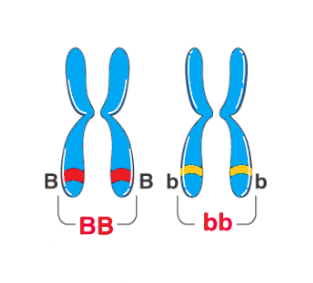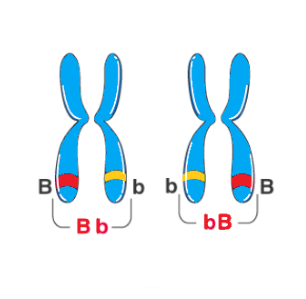How Dominant and Recessive Alleles Affect Traits
In genetics, every individual inherits two copies of each gene—one from each parent. These copies are called alleles. When both alleles are the same, the individual is said to be homozygous for that particular trait. Conversely, when the two alleles differ, the individual is heterozygous for that trait. Understanding homozygous vs heterozygous is crucial for interpreting patterns of inheritance, predicting traits, and recognising how certain characteristics are passed on through generations.
In this article, we will explore the difference between homozygous and heterozygous with examples, define key genetic terms such as homozygous dominant and homozygous recessive, and offer practical insights that go beyond standard textbook explanations.
Definition and Overview
Homozygous: Having two identical alleles for a particular gene (e.g., AA or aa).
A homozygous dominant genotype would be represented by two dominant alleles (AA).
A homozygous recessive genotype would be represented by two recessive alleles (aa).
Heterozygous: Having two different alleles for a particular gene (e.g., Aa). In this case, the phenotype—i.e., the outward expression—may be determined by which allele is dominant or how both alleles interact (complete dominance, codominance, or incomplete dominance).
If you encounter the term heterozygous in biology, it generally refers to organisms whose homologous chromosomes carry dissimilar alleles (e.g., one dominant and one recessive) for a given trait.
Difference Between Homozygous and Heterozygous with Examples
The difference between homozygous and heterozygous, with examples, can be most clearly understood by examining the alleles carried by an individual:
These homozygous and heterozygous examples illustrate how the alleles pair up differently and influence inherited traits.
Why is this Important?
Genetic combinations influence not only physical traits, such as hair colour or eye colour but also the inheritance of genetic disorders. By knowing whether an individual is homozygous or heterozygous for a particular gene, one can predict how traits might be passed on to the next generation. Therefore, homozygous vs heterozygous concepts form the foundation of classical genetics, aiding in everything from punnett square predictions to advanced genetic counselling.
Additional Insights: Dominant Vs Recessive
Homozygous Dominant (AA)
Typically, it displays the dominant trait because both alleles code for it.
For instance, if “A” represents a dominant allele for tall height in pea plants, the AA genotype will produce tall plants.
Homozygous Recessive (aa)
Expresses the recessive trait only if no dominant allele is present.
For example, if “a” represents a recessive allele for short height, plants with aa genotype will be short.
Heterozygous (Aa)
May display either the dominant trait (if there is complete dominance) or an intermediate/combined trait (in cases of incomplete dominance or codominance).
A classic example is the snapdragon flower colour. A red (RR) flower crossed with a white (rr) flower often produces pink (Rr) flowers due to incomplete dominance.
Unique Fact: Genetic Testing and Real-world Applications
Beyond theoretical genetics, doctors and researchers employ genetic testing to determine if individuals are homozygous dominant, homozygous recessive, or heterozygous for genes responsible for certain hereditary conditions. This helps in risk assessment, family planning, and understanding trait distributions in a population.
Short Quiz
Test your understanding of homozygous vs heterozygous concepts by answering these questions:
1. What does “heterozygous definition biology” generally imply about an organism’s alleles?
a) They are identical.
b) They are different.
c) They lack dominant alleles.
2. Which of the following is a homozygous example?
a) AA
b) Aa
c) AB
3. If an organism has the genotype Aa, how many types of gametes does it produce?
a) 1
b) 2
c) 3
4. Which genotype is guaranteed to express the dominant trait?
a) Homozygous dominant
b) Homozygous recessive
c) Heterozygous
Quiz Answers
(b) They are different.
(a) AA
(b) 2
(a) Homozygous dominant
Links to Related Topics
For a more in-depth exploration of genetics and biology, you may also be interested in reading about:
You might also like to brush up on your broader biology knowledge with these references:


FAQs on Homozygous vs Heterozygous: Definitions, Examples & Key Concepts
1. What is the fundamental difference between homozygous and heterozygous genotypes?
The fundamental difference lies in the combination of alleles an organism possesses for a specific gene. An individual is homozygous if they have two identical alleles for a trait (e.g., TT for tallness or tt for dwarfism). In contrast, an individual is heterozygous if they have two different alleles for the same trait (e.g., Tt).
2. How do homozygous and heterozygous genotypes determine an organism's phenotype?
The genotype (the set of alleles) directly influences the phenotype (the observable characteristics). In a homozygous dominant genotype (e.g., AA), the dominant trait is expressed. In a homozygous recessive genotype (e.g., aa), the recessive trait is expressed. For a heterozygous genotype (e.g., Aa), the phenotype is typically determined by the dominant allele, which masks the effect of the recessive one, a principle known as complete dominance.
3. Can a heterozygous individual ever express a trait that seems recessive?
While in complete dominance the recessive trait is masked, its influence can be seen in other inheritance patterns. These include:
- Incomplete Dominance: The heterozygous phenotype is an intermediate blend of the two homozygous traits. For example, a red flower (RR) and a white flower (rr) can produce a pink flower (Rr).
- Codominance: Both alleles in the heterozygous genotype are fully and distinctly expressed. A classic example is the human ABO blood group system, where an individual with the 'AB' genotype expresses both A and B antigens.
4. What makes one allele dominant and another recessive?
The dominance of an allele is determined by the protein it codes for. A dominant allele typically produces a functional protein or enzyme that results in a visible physical trait. A recessive allele often codes for a non-functional enzyme or no protein at all. Its effect is only observable in a homozygous recessive state (e.g., aa), where no functional protein is produced.
5. Is a homozygous genotype always more advantageous than a heterozygous one?
Not necessarily. In some cases, a heterozygous genotype can offer a survival benefit, a phenomenon known as heterozygote advantage. For example, individuals who are heterozygous for the sickle cell anemia trait (HbA HbS) are more resistant to malaria than homozygous individuals (HbA HbA), providing a significant advantage in malaria-prone regions without causing the severe symptoms of sickle cell disease found in HbS HbS individuals.
6. How is the concept of homozygous and heterozygous states applied in genetic counselling?
Understanding these concepts is critical for predicting the inheritance of genetic disorders. Genetic counsellors use this knowledge to assess the risk of a couple having a child with a particular condition. For many recessive disorders, like cystic fibrosis, a child must inherit two recessive alleles (be homozygous recessive) to have the disease. Their parents are often carriers (heterozygous) who do not show symptoms but can pass the allele to their offspring.
7. How can a Punnett square help visualise the difference between homozygous and heterozygous outcomes?
A Punnett square is a simple chart used to predict the probable genotypic outcomes of a genetic cross. By mapping the alleles from each parent, you can determine the potential combinations in their offspring. For instance, a cross between two heterozygous parents (e.g., Tt x Tt) predicts that the offspring have a 25% chance of being homozygous dominant (TT), a 50% chance of being heterozygous (Tt), and a 25% chance of being homozygous recessive (tt).












